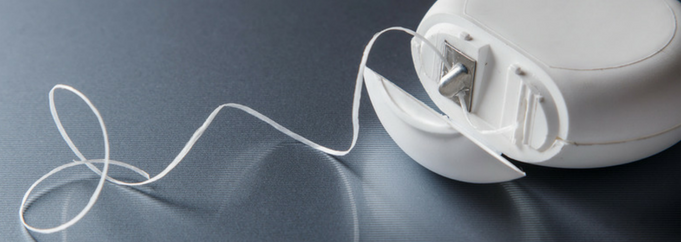I Floss, My Gums Still Bleed

This is a statement that comes up with many people who visit our dental office. It’s often followed by the question: “Why do my gums still bleed and hurt?”
Patients are told to floss once or twice a day to keep their gums healthy. It is important to remove food and plague that get stuck between the teeth and gums where a toothbrush, electric or manual, cannot properly clean.
Even when you think that you are doing things right, you might be missing a step and it’s causing your gums to stay irritated.
If you are flossing and still having gum bleeds, gum sensitivity, or gum pain, there are a few tips to improve your daily routine:
- Floss twice a day or after every meal: Sometimes, flossing more frequently is the best way to reduce gums that are infected with gingivitis (gum disease). Flossing in the morning after breakfast and at night before going to bed is the best start. You can go a step further and floss after ever meal. Floss 3 times per day at the most as more than that can be too much for the gums.
- Brush twice per day: Ensure that you are brushing your teeth in the morning and at night to ensure your gums are being cleared. Three times per day is also okay, but don’t exceed this, unless instructed by your dentist, as it can be too much for the teeth and gums.
- Make sure that you are flossing properly: Flossing is more than just pulling a string between the teeth then pulling it out. The correct way to floss involves putting taught floss between two teeth, then pulling it to the side to brush along the side of the tooth down and up. With each between-section of two teeth there are two inner sides to do this motion. You should go down into the gum line a bit, not aggressively. Flossing should not hurt. Here is a brief video and article about how to floss from Colgate: https://www.colgate.com/en-us/oral-health/basics/brushing-and-flossing/how-to-floss
- Floss, brush, and use mouthwash: Try this routine during the morning after breakfast and at night before going to sleep. Floss to remove stuff between the teeth, spit and rinse your mouth with water, brush to clean other surfaces, spit and rinse again, then use an antiseptic mouthwash, swooshing aggressively and gargling for 60 seconds before spitting.
- Don’t brush too hard: Brushing your teeth too hard can cause gum irritation and wear enamel off of teeth. If using an electric toothbrush, remember to glide along the teeth up and down, don’t press into the tooth or brush. If using a manual toothbrush, don’t press too hard into the tooth and gums when brushing. It’s not like scrubbing mold from a shower. With fast motion the bristles will do great work without pressing hard up against the tooth. Beyond feeling the brushing too much, a sign of brushing too hard is when the bristles on your brush look bent and mangled too quickly. They shouldn’t look worn until after a month or longer.
Check your routine to the above items and make corrections where needed. Try the changes for a month and you should notice an improvement. You can always ask your dentist for demonstrations. Proper form is important with oral hygiene.
If you still notice gum bleeding, sensitivity, discoloration (other than pink or pinkish purple), pain, or inflammation then talk with your dentist. There are special intense mouth rinsing solutions and deeper cleaning treatments that can be tried.
